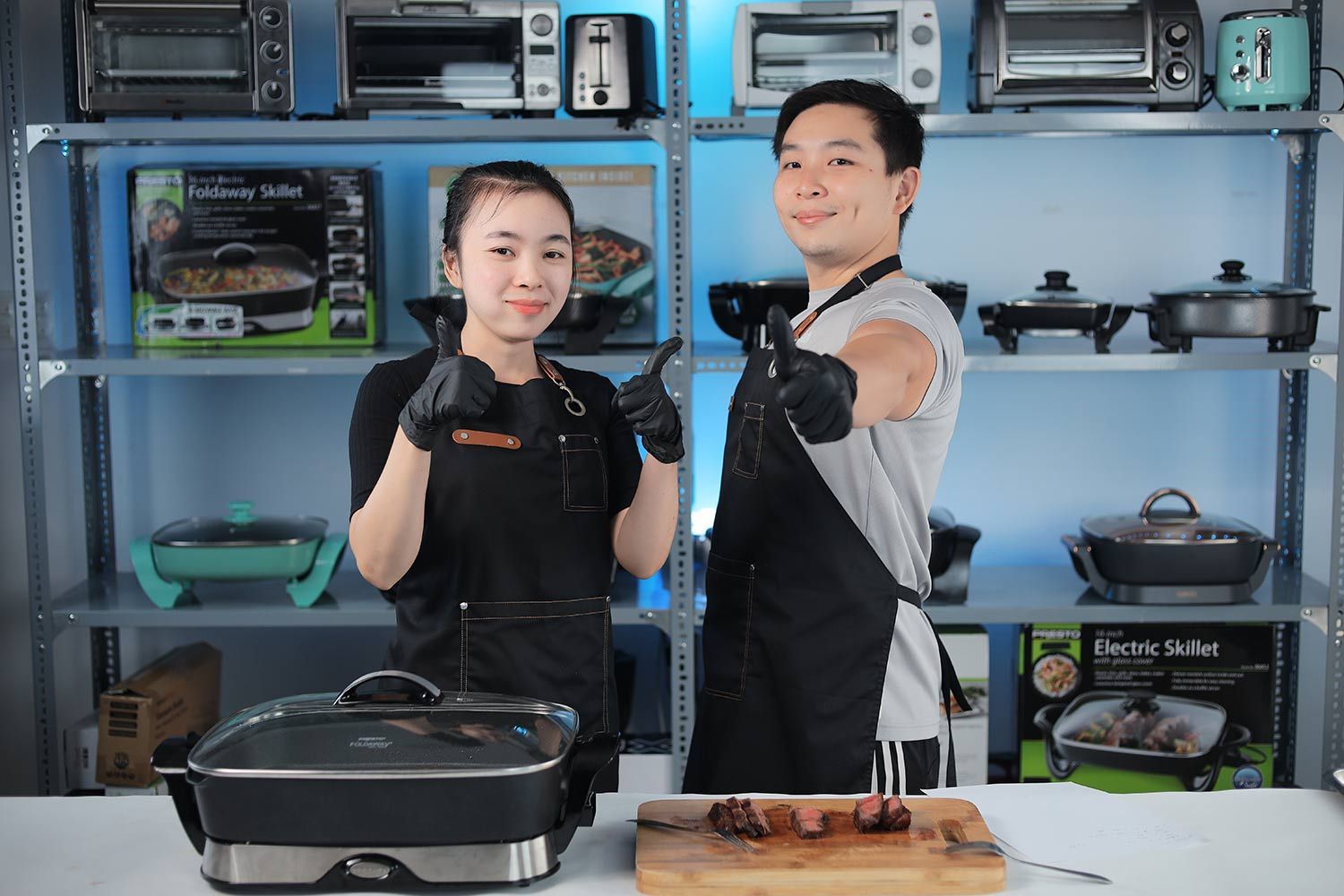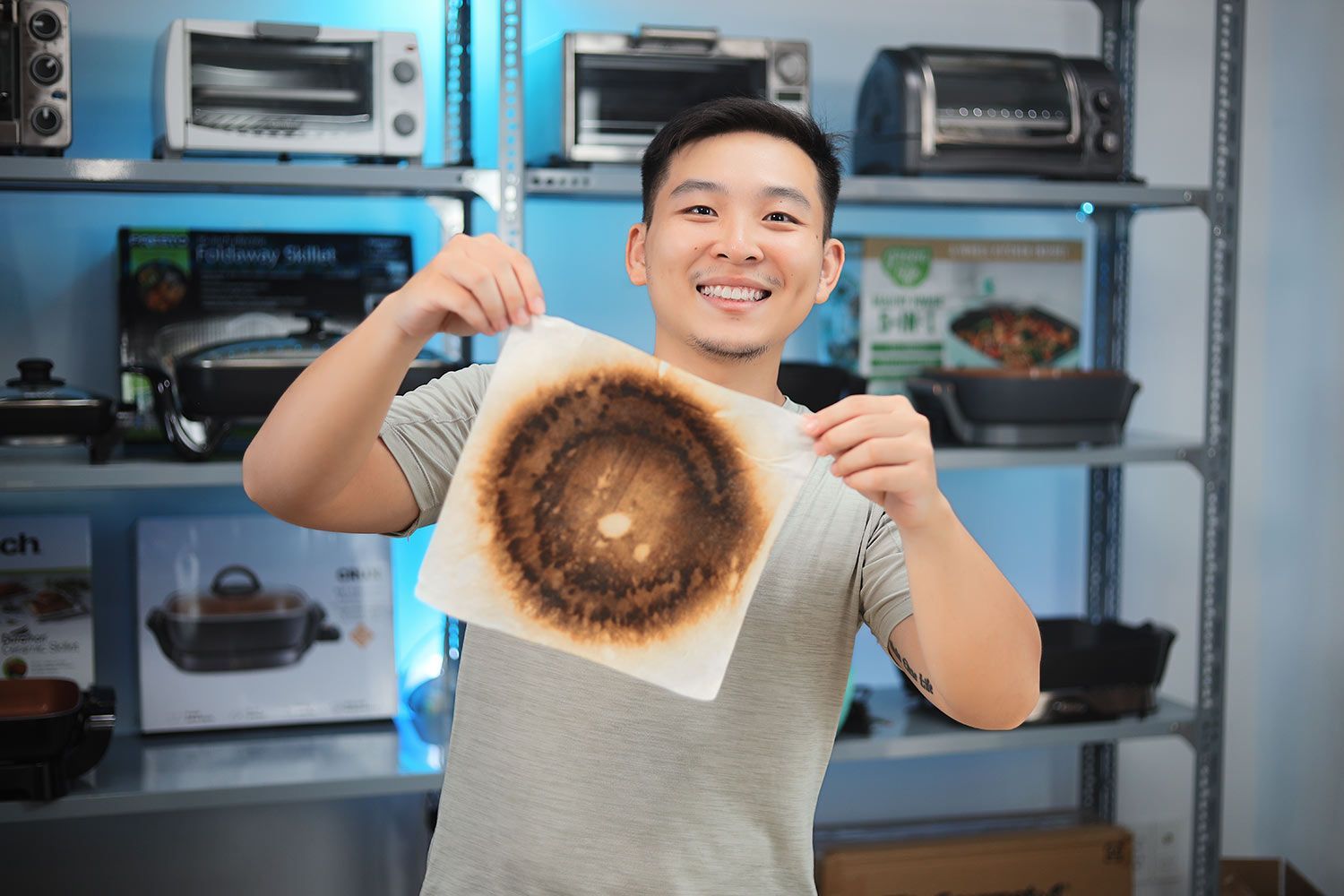Our recommendations are made independently. We may receive commissions from purchases made via our links.
Making Pancakes Test for Electric Skillets
Putting electric skillets to the test with our signature pancake recipe! Discover our original pancake recipe tailored for electric skillets and learn how we evaluate the cooking results!
This test is part of How Shouldit Tests Electric Skillets v1.0
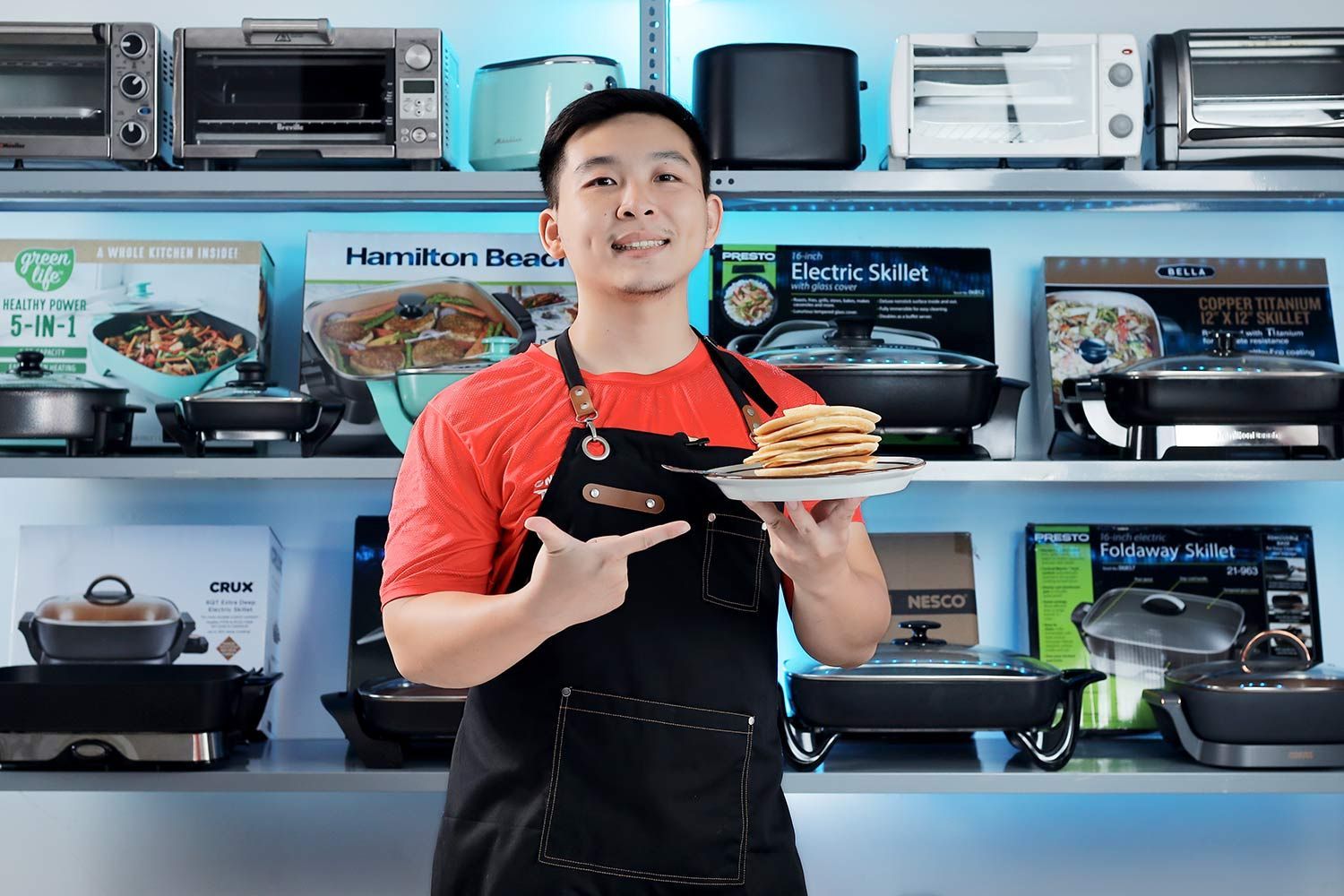
We chose two food tests to rate and evaluate electric skillets. One of these was flapjack pancakes because of their popularity and easy-to-make common batter. The other test was cooking steaks.
Making Pancakes takes up 20% of the performance score. This test gives us insights into the skillet’s preheating time, evenness of cooking, and the pan’s non-stick qualities.
And to do all of this, we first needed to decide on a consistently good recipe.
Our Electric Skillet Pancake Recipe
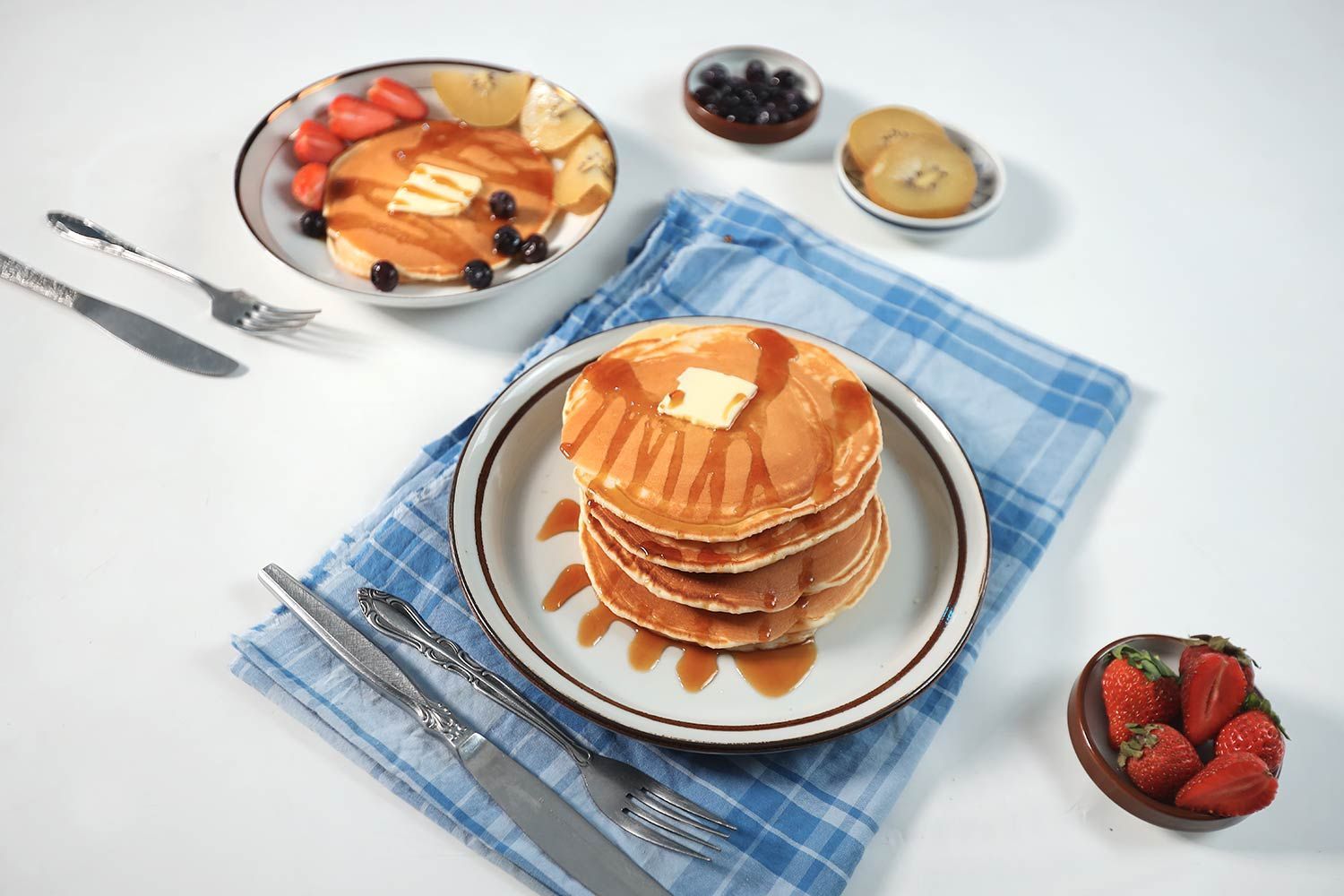
To minimize the variables, we developed an original electric skillet pancake recipe and used it to test all skillets. After consulting a number of recipes, including from a very popular Youtube video by Hands Touch and another from our sister site Healthy Recipes 101, we finalized a recipe adjusted to taste and practicality for an electric skillet.
- 2 cup (240 g / 8.5 oz) all-purpose flour
- 1/4 cup (50 g / 1.8 oz) sugar
- 2 tsp (8 g / 0.3 oz) baking powder
- 1 tsp (4.5 g / 0.16 oz) salt
- 1 ½ cup (200 g / 7 oz) milk
- 3 tbsp (45 g / 1.6 oz) melted unsalted butter
- 1 tsp (3 g / 0.1 oz) vanilla extract
- 2 eggs
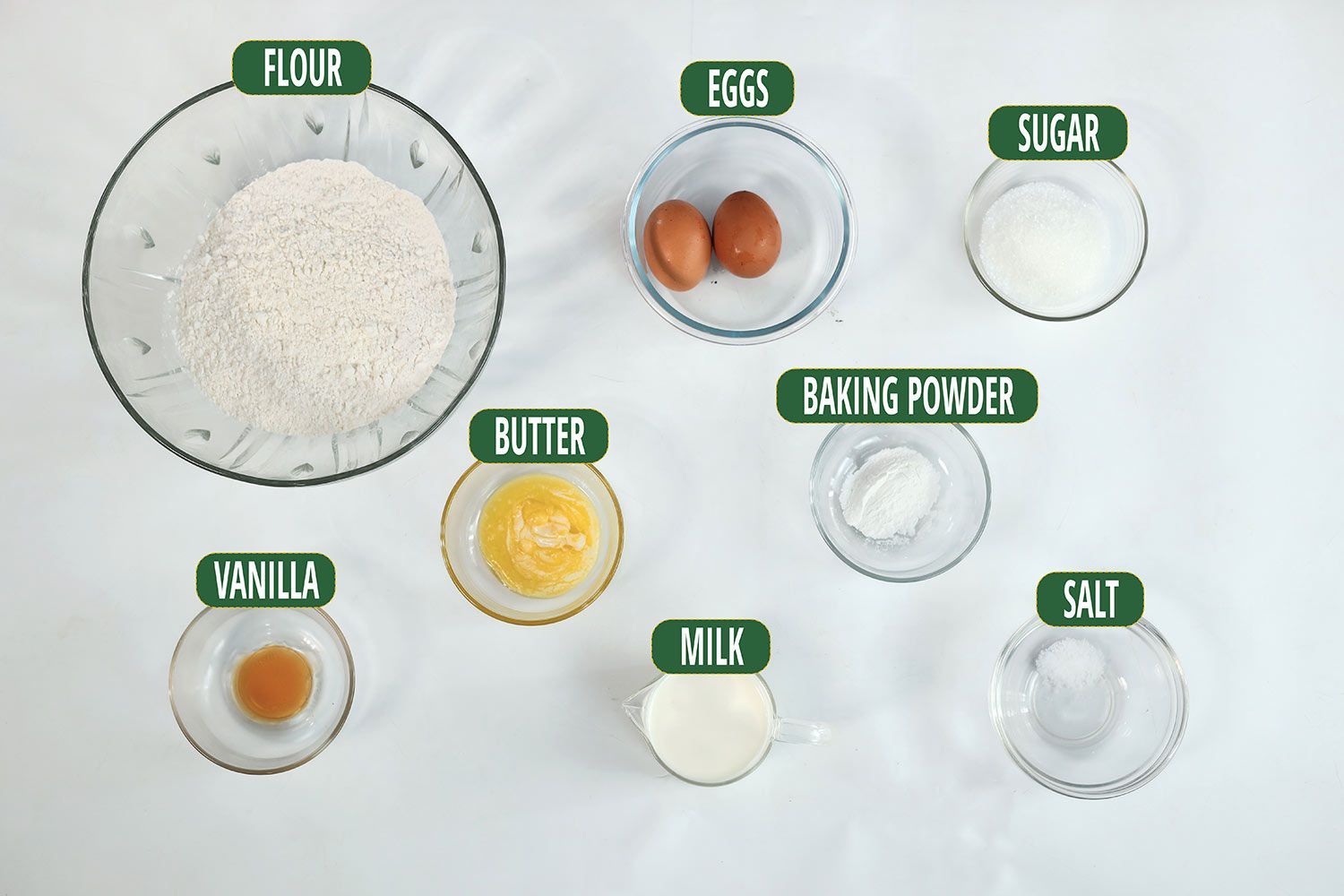
Mixing all the ingredients together will give a batter with a slightly thin consistency. Our recipe will give you five to six 3.17 oz (90 g) pancakes that are golden brown and soft on the outside while moist and fluffy on the inside.
To make the pancakes, preheat the skillet to 350°F (checking with an infrared thermometer) which is the equivalent of medium heat. In order to evaluate the non-stick coating, we don’t grease the pan.
We had the best results across different skillets cooking the first side for 1 min 30 sec and then the second side for 3 min. The second side takes longer because electric skillets heat up in cycles and, at 350°F, they tend to cycle off around the 3-minute mark so the temperature doesn’t rise too high.
Notes: Some recipes add baking soda but we found this thinned out the batter too much and made the pancakes too dark before the inside cooked properly. If you’re following our recipe and want thicker and crispier pancakes, just reduce the milk in half and double the butter.
Testing Steps
1. Prepare one infrared thermometer, fixed on a stand, and point it at the center of and 12 inches away from the subject skillet.
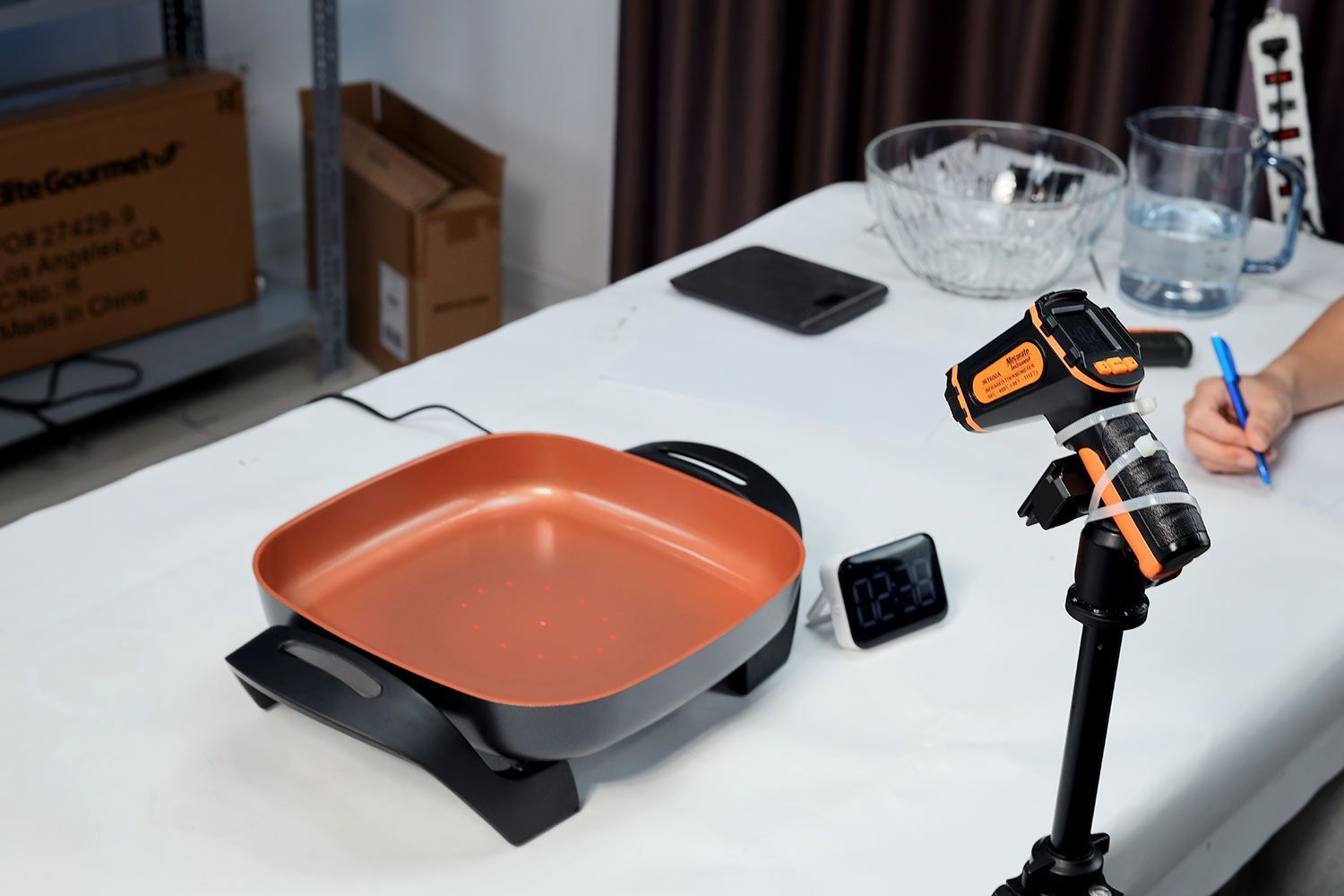
2. Weigh all the dry ingredients separately, including flour, sugar, baking soda, salt, then put them in a bowl.
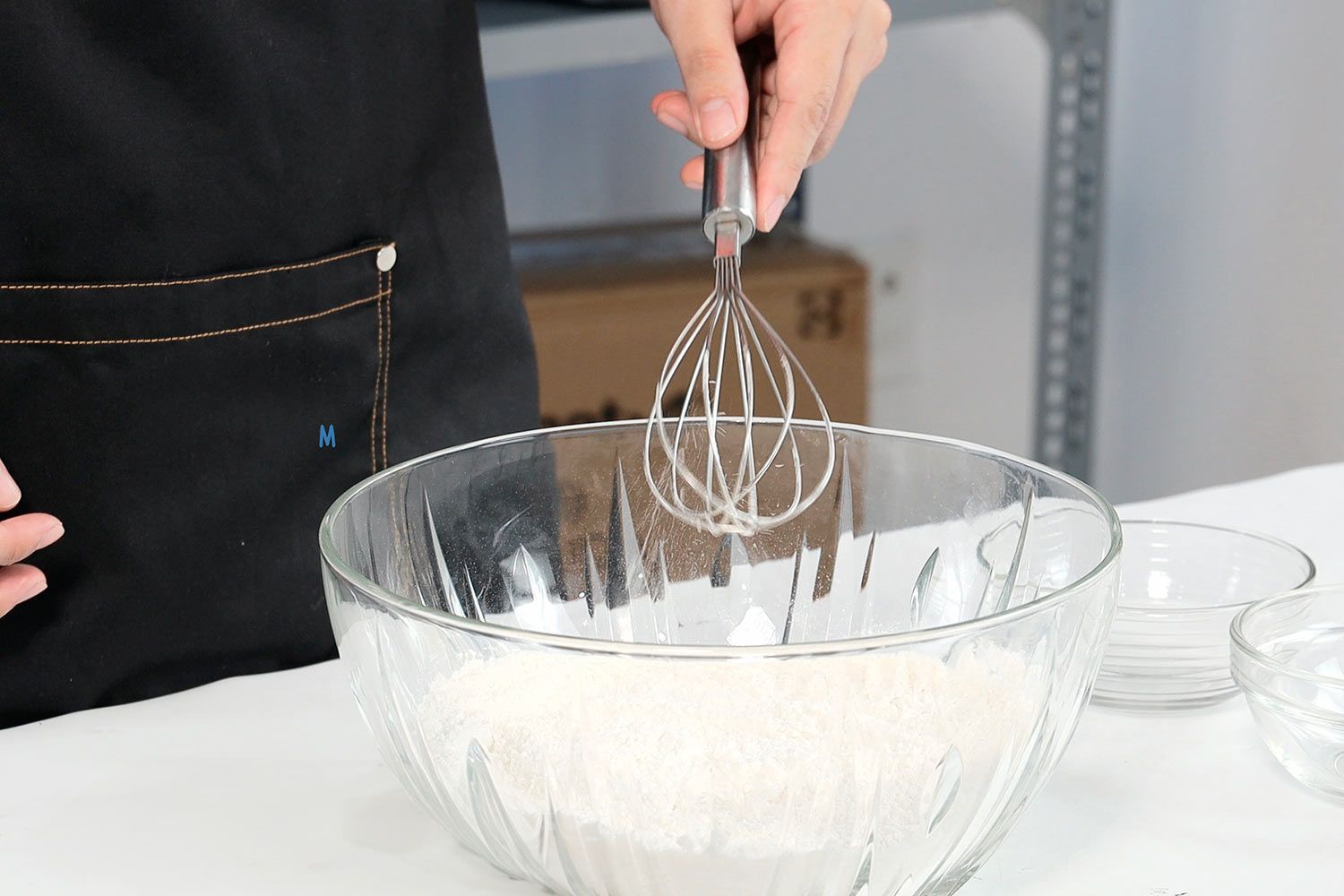
3. Weigh all the wet ingredients separately, including milk, melted butter, vanilla extra, 2 eggs, and put them in another bowl.
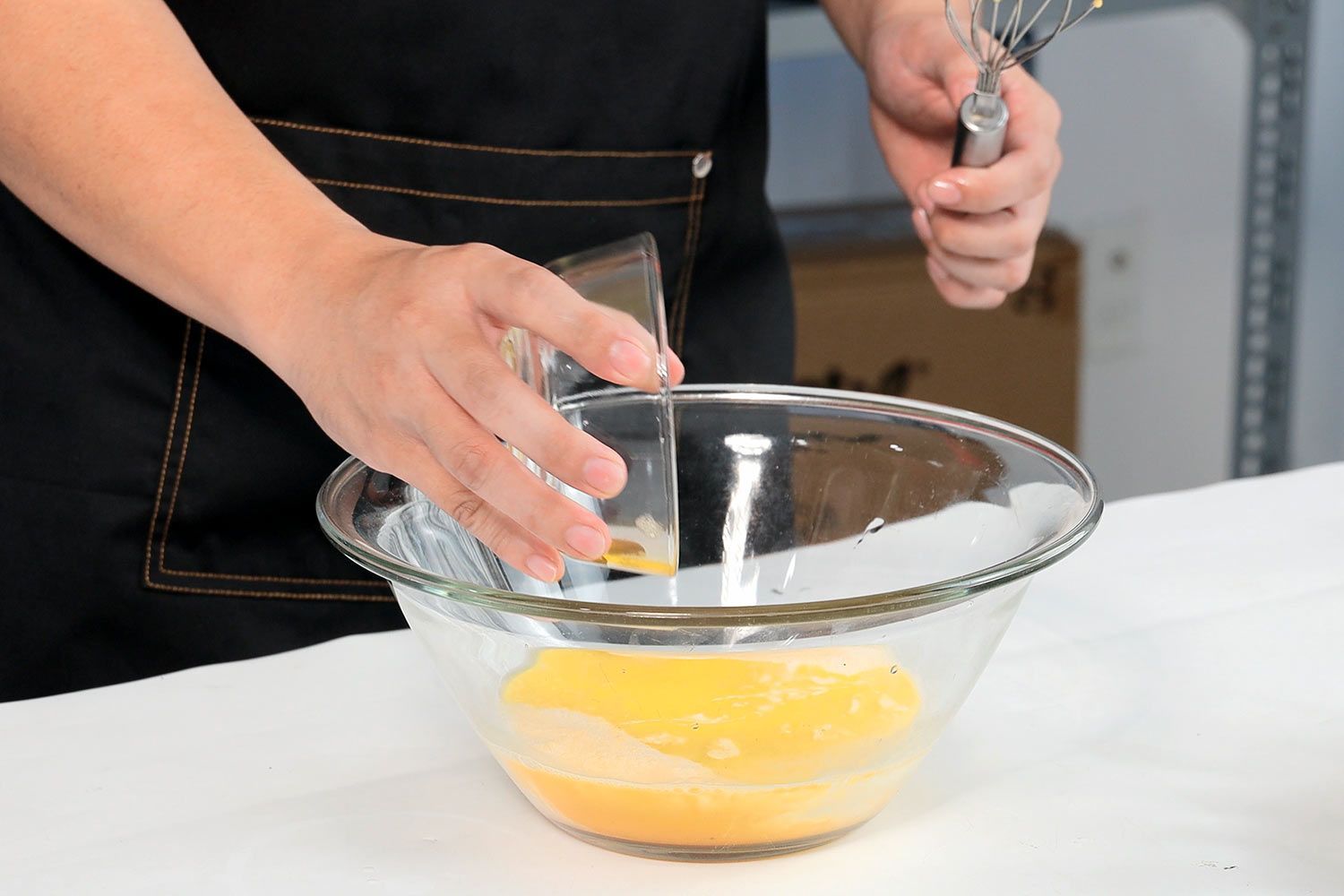
4. Pour the wet ingredients into the dry ingredients and whisk until everything is well combined. The batter consistency should be slightly thin, just enough to coat the whisk or scoop.

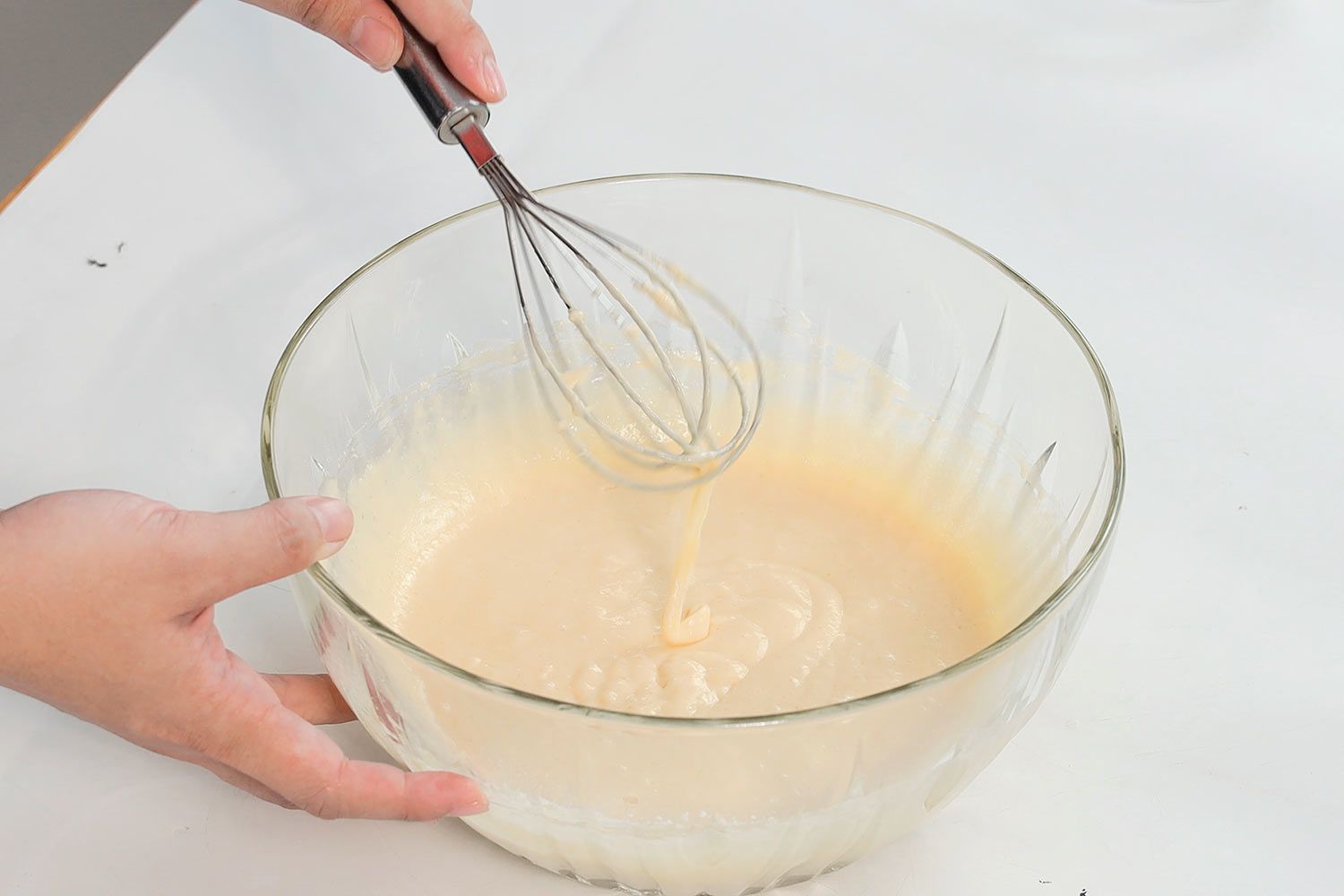
5. Turn on the thermometer and the subject skillet until the temperature reads 350°F on the thermometer.
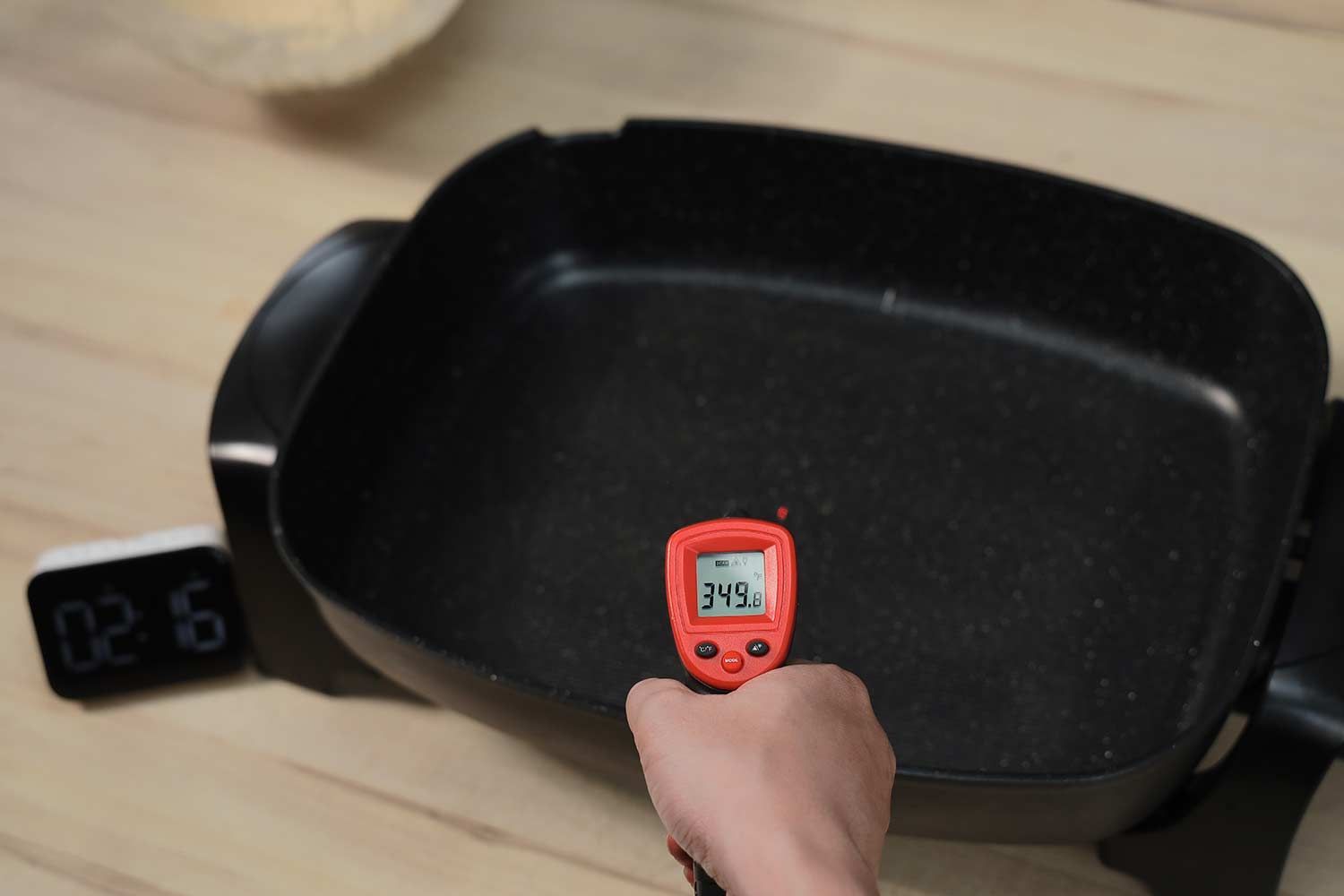
6. Scoop half a cup of batter and pour it straight to the center of the pan and even it out if necessary but don’t press on it.
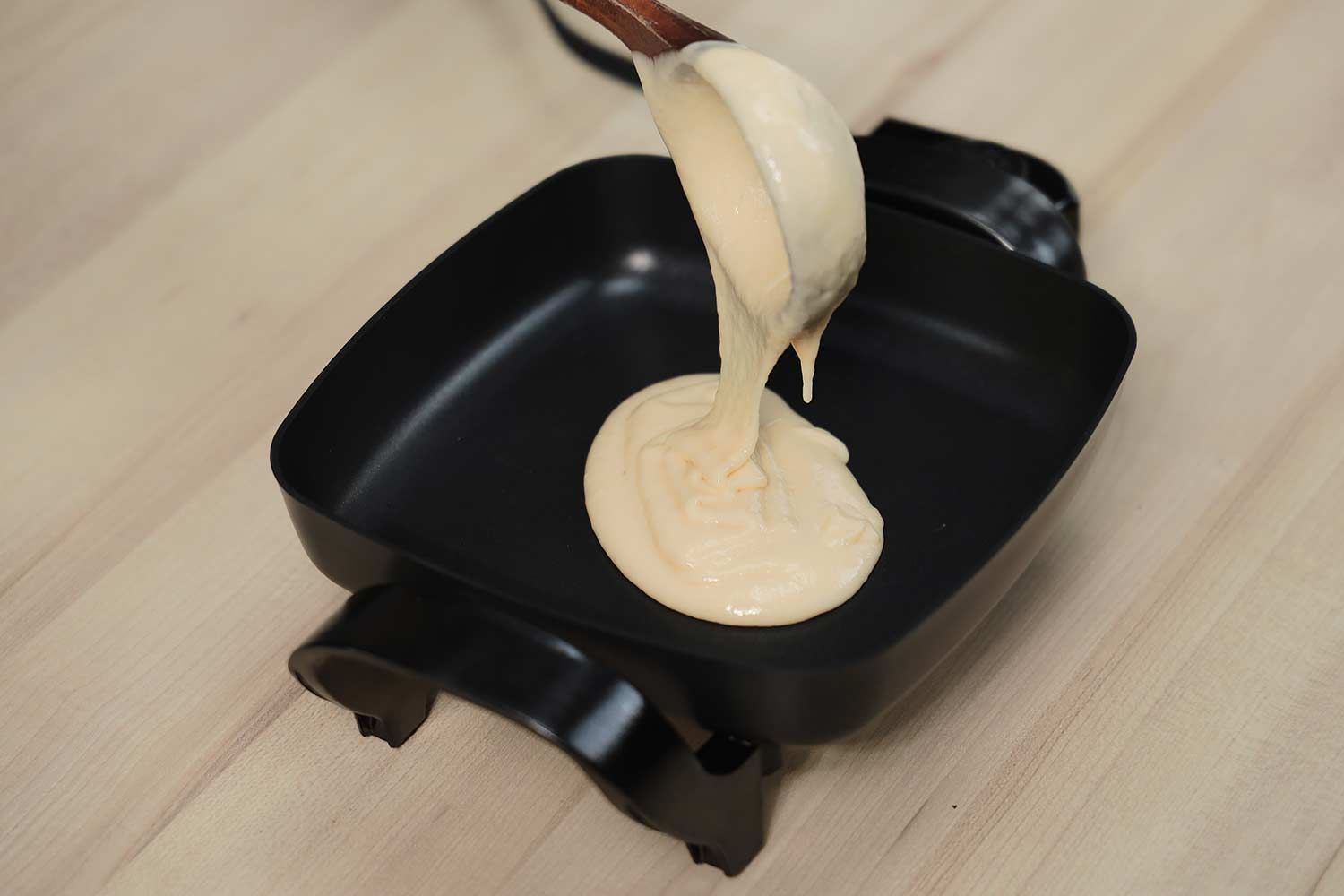
7. Cook the pancake on the first side until golden brown. It should take about 1 min to 1 min 30 sec.
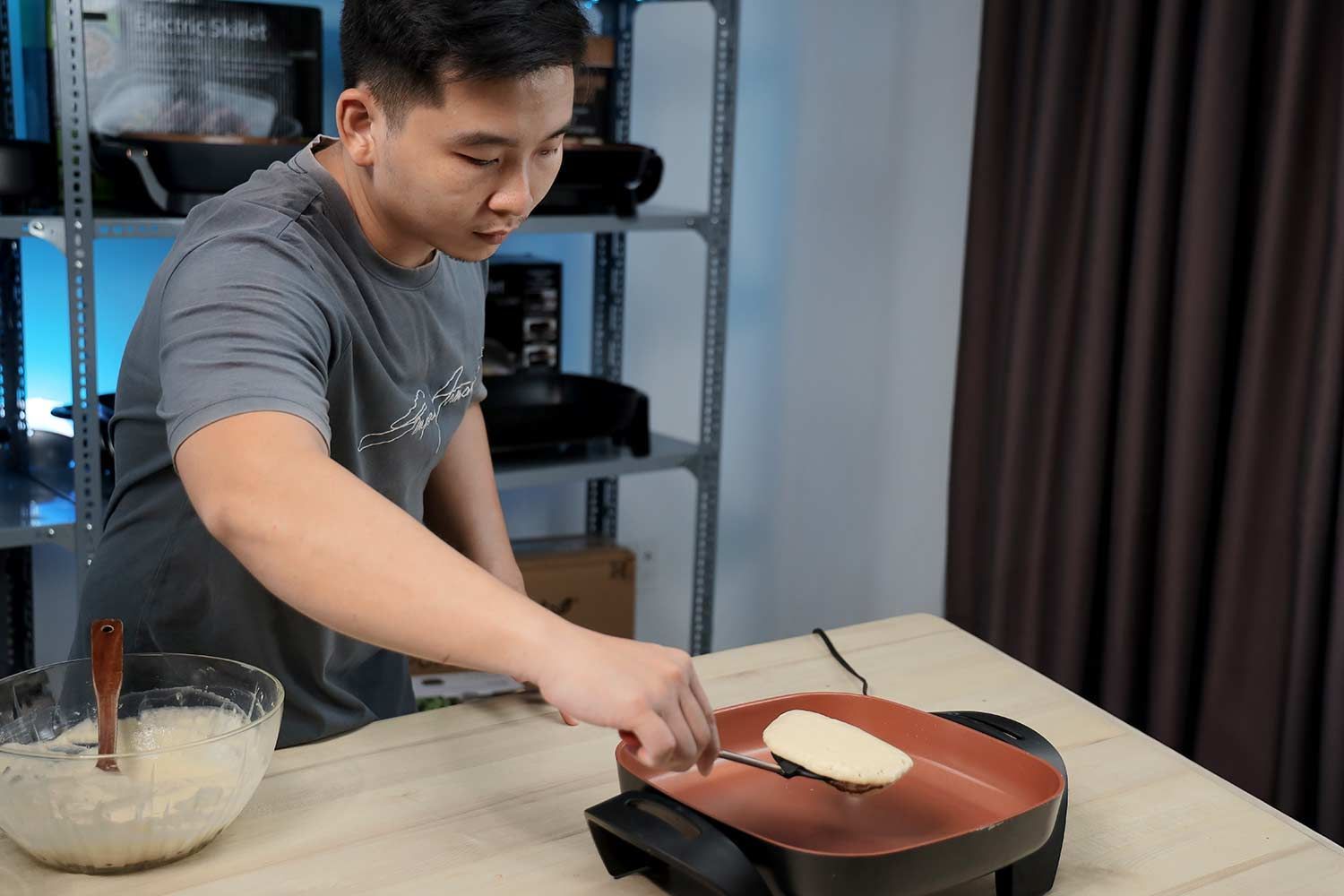
8. Carefully flip the pancake with a heat-resistant spatula and cook the other side until golden brown. It should take about 2 min 30 sec to 3 min 30 sec.
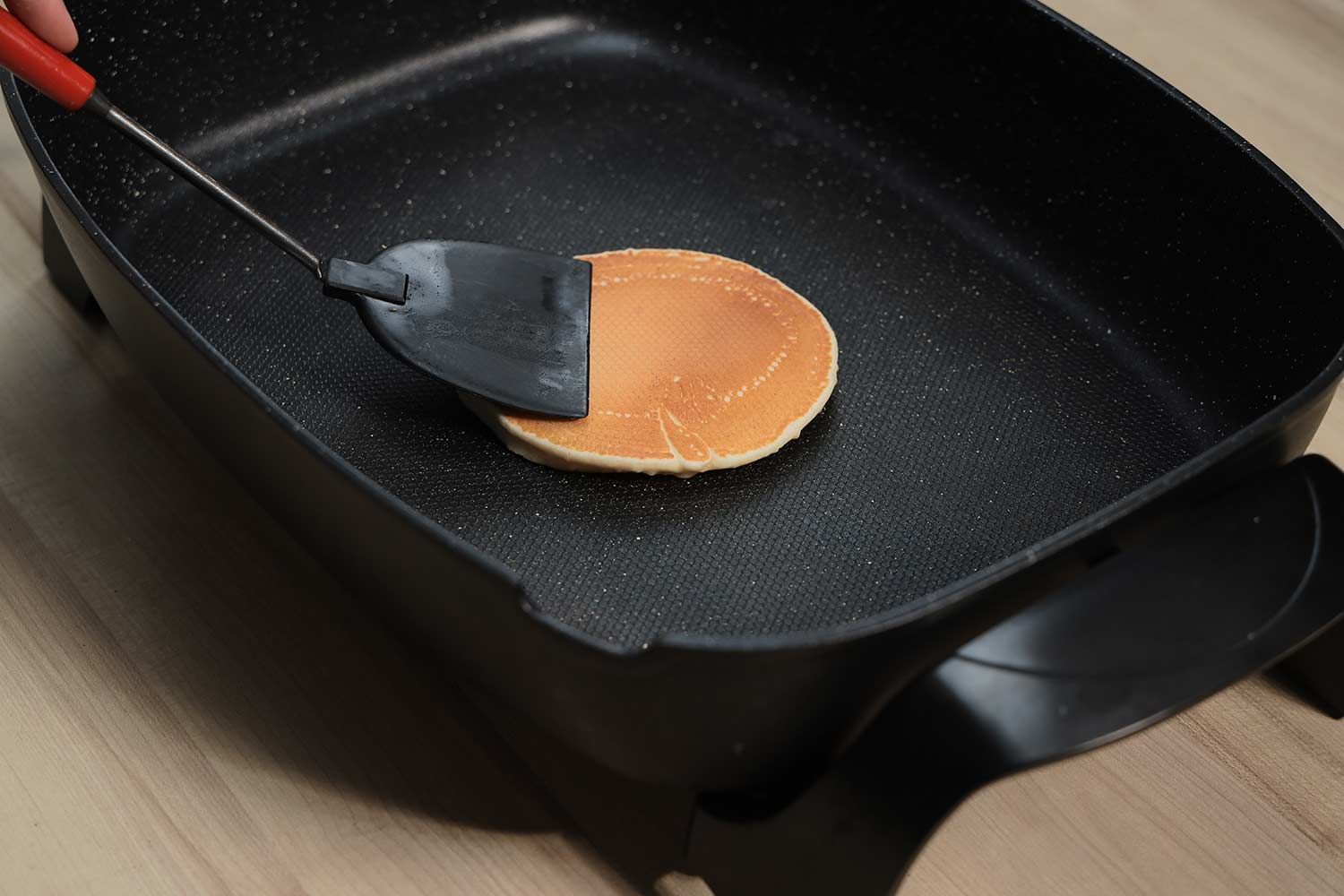
9. Remove the pancake from the skillet and let it cool on a wire rack.
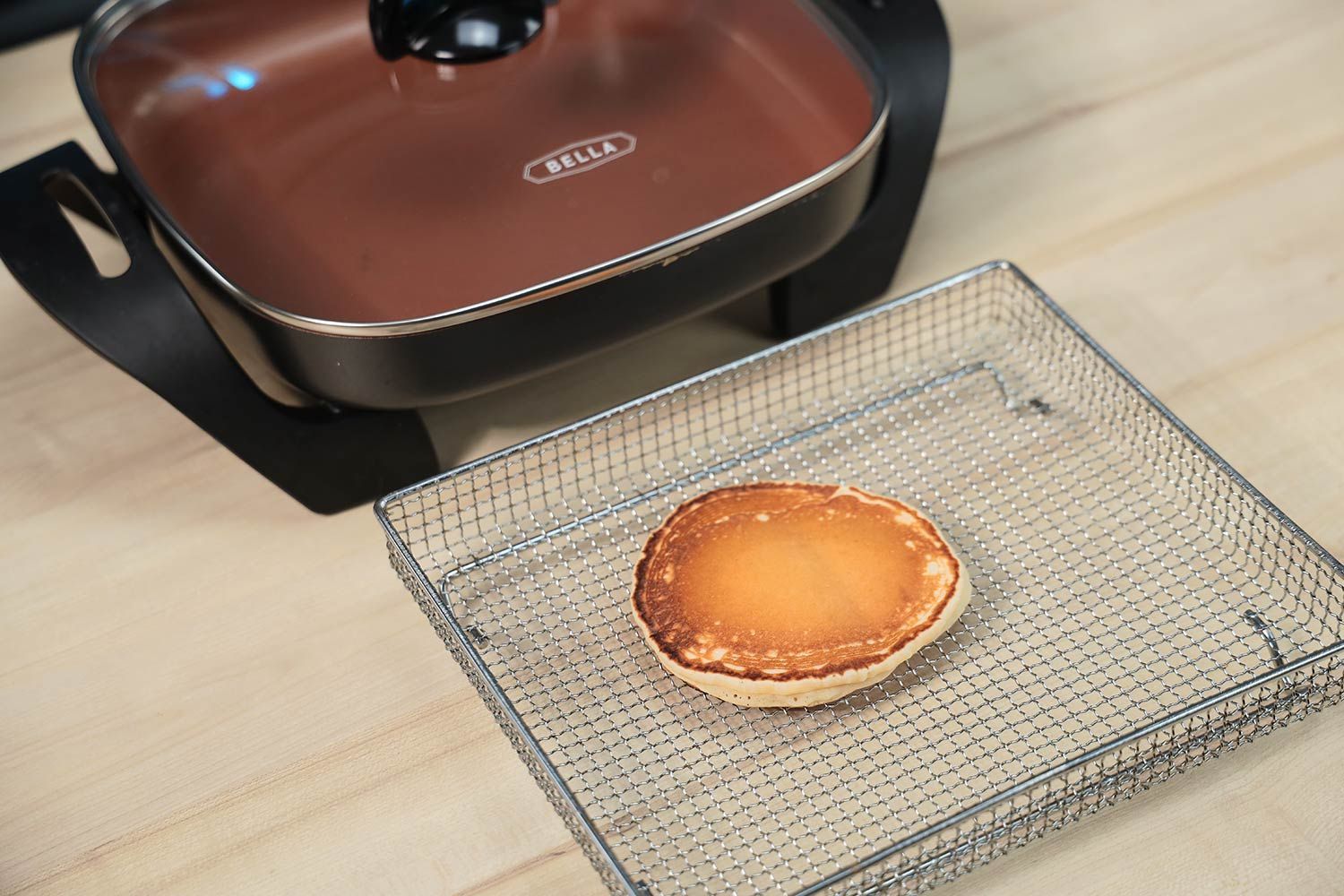
10. Clean the pan once everything cools down.
How We Score
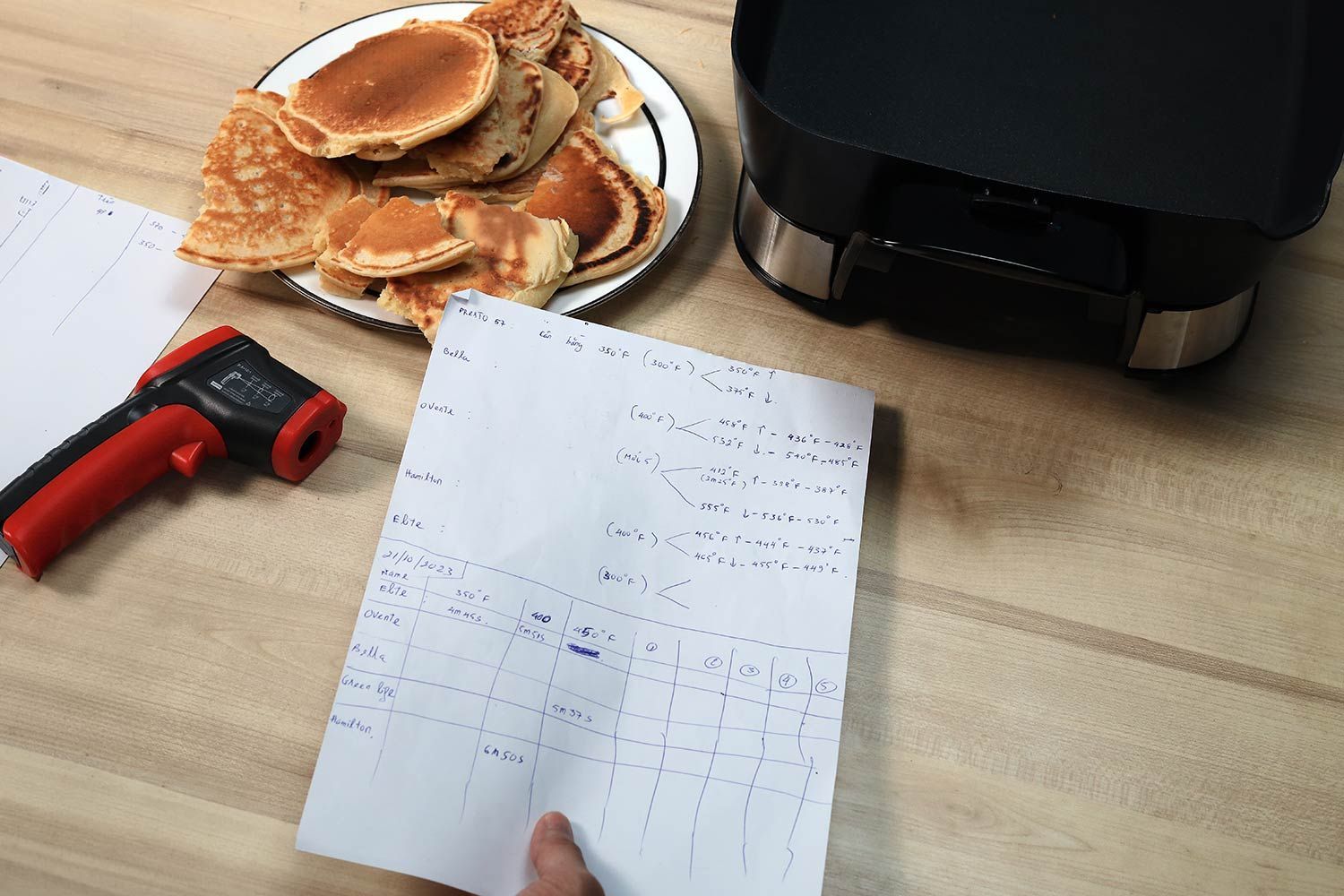
To make sure the pancakes cook as (close to) perfect as possible and within the ideal cooking time, we have our head chef Tuyet Pham to supervise the process and evaluate the finished pancakes.
Preheating Time
Since the cooking length varies each time, we don’t assess it but the preheating time—the time the skillet takes to preheat to 350°F in comparison with others.
According to our data, the fastest skillets did the job in 2 minutes or less, so we took that as the benchmark for a 10/10 score. Then, we simply deduct 1 point for each minute increase in duration. We deemed 10 minutes to be too long just to preheat the pan so that would be our limit for a 0/10.
- 10/10: 2 minutes
- 9/10: 3 minutes
- 8/10: 4 minutes
- 7/10: 5 minutes
- 6/10: 6 minutes
- 5/10: 7 minutes
- 4/10: 8 minutes
- 3/10: 9 minutes
- 2/10: 10 minutes
- 0/10: > 10 minutes
Pancake’s Edibility
Evaluating the pancakes also answered the question, “Can you make pancakes in an electric skillet?”.
Our chef, with years of experience and professional awards under her belt, grades the pancakes based on their color, texture, and overall taste. Amature opinions matter as well, so the scoring team also has three foodies working on the project.
Since the temperature is fixed to minimize variables, our chef is there to decide the balance between the cooking time and the result.
In reality, you can reduce the temperature but that may prolong the cooking time which may lead to a lack of coloring and a dry cake, all of which are included in our chef’s evaluation criteria.
A perfect pancake should have:
- Appearance: 100% even golden brown color on both sides.
- Texture: Perfectly fluffy and steamy inside out.
- Taste: A buttery aroma and rich, delicious taste to match the perfect color and texture.
- Non-stick evaluation: If the pancake sticks to the pan and breaks apart, a point is deducted. For the cleaning afterward, nothing should stick to the pan that requires laborious scrubbing.
- 10/10: 100% even golden brown color; no dark edges; steamy and fluffy
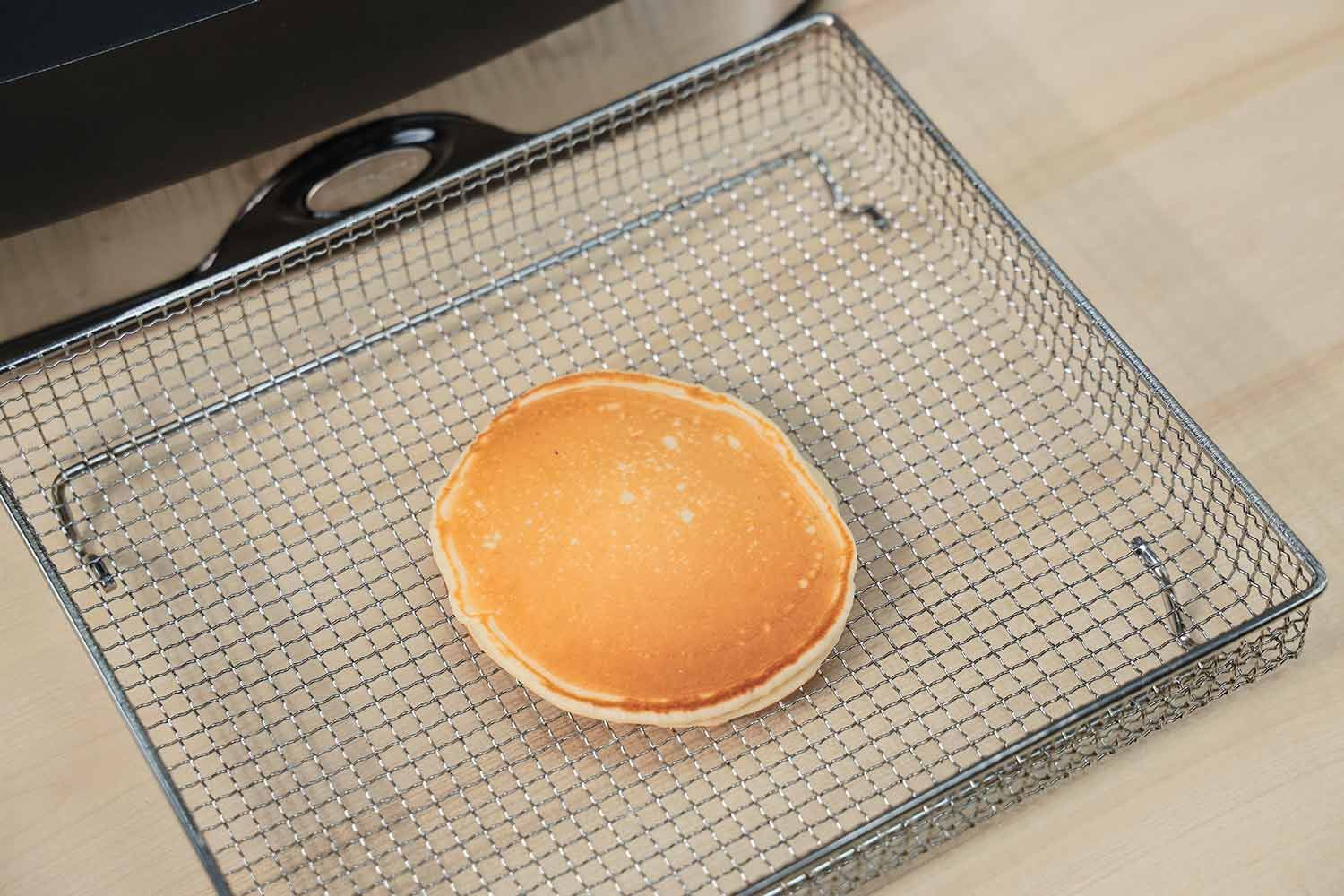
- 9/10: even golden brown color; no dark edges; steamy and fluffy

- 8/10: 80% even golden brown color; one slightly dark edge; steamy and fluffy
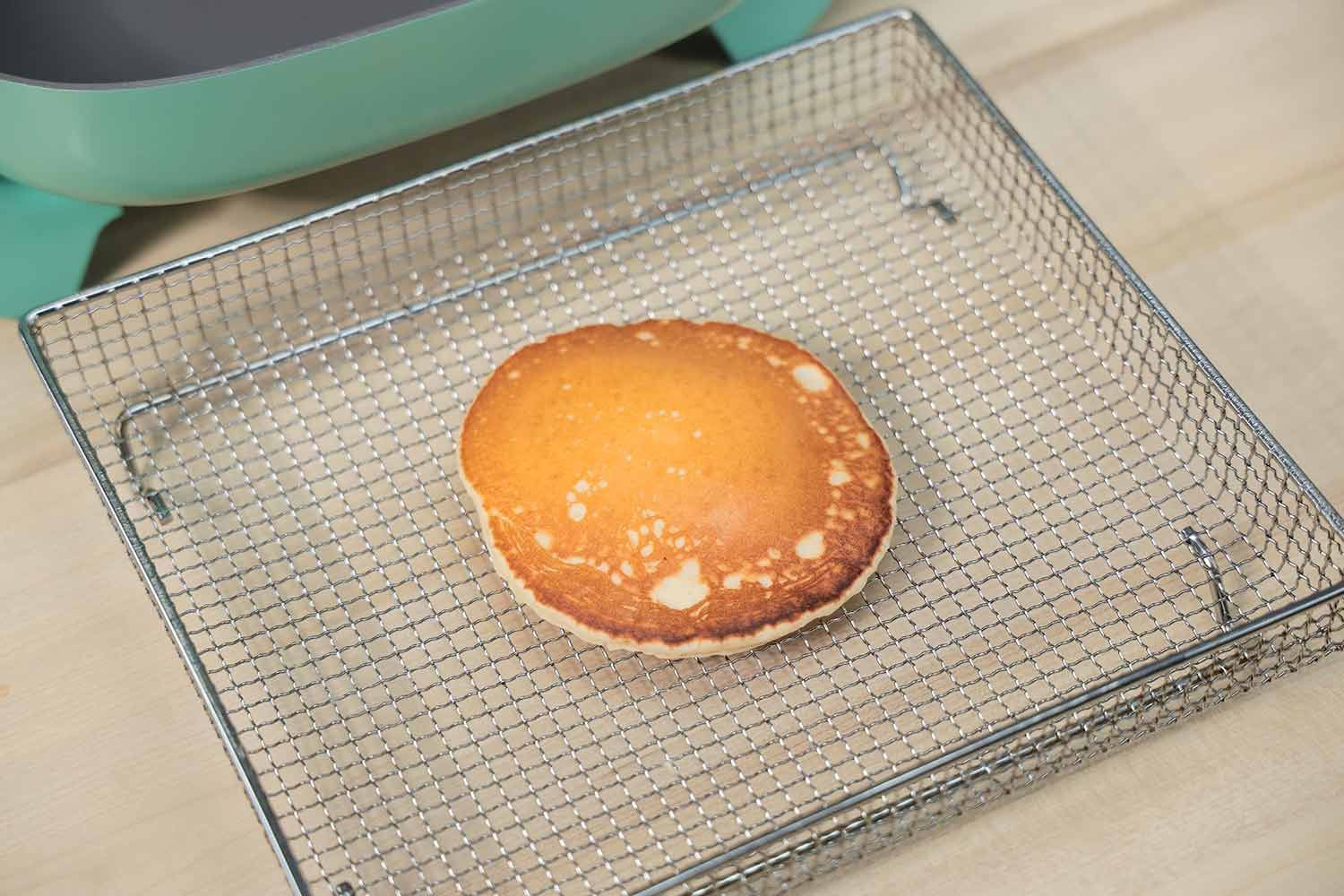
- 7/10: 70% even golden brown color; one slightly dark edge; a bit too dry or too moist
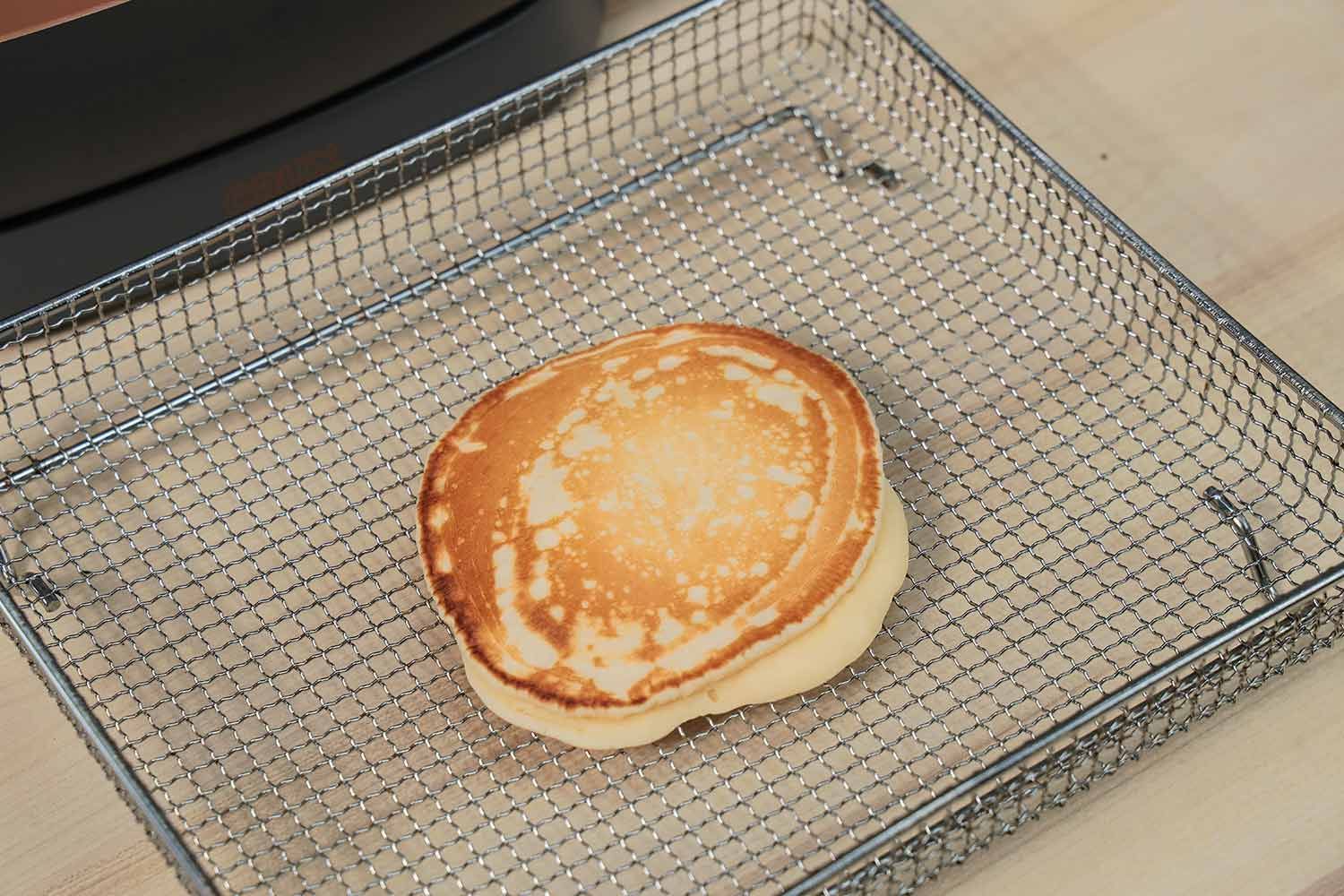
- 6/10: 60% even golden brown color; noticeable dark edges; a bit too dry or too moist
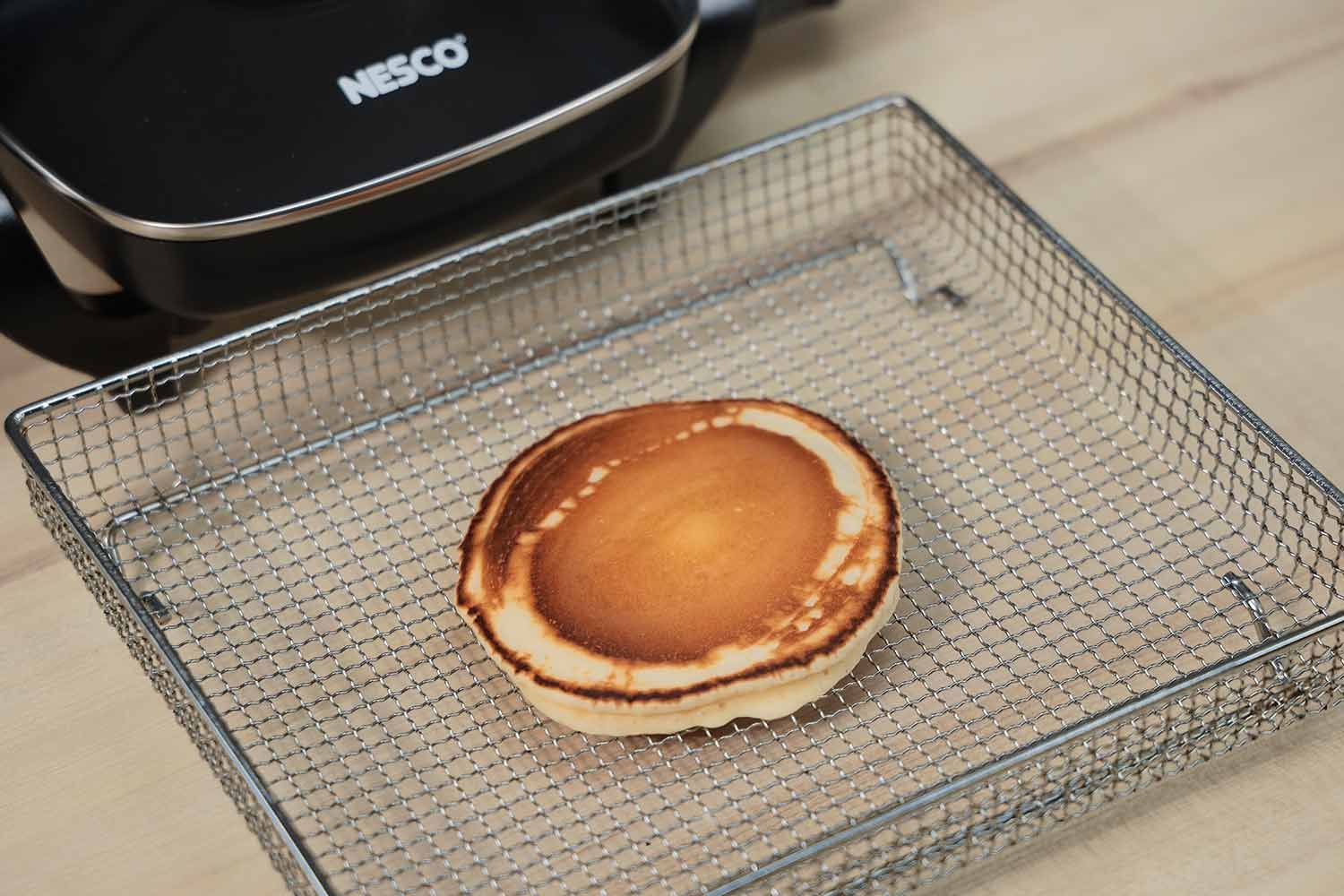
- 5/10: 50% even golden brown color; noticeable dark edges; too dry or too moist
- 4/10: 40% even golden brown color; highly noticeable dark edges; too dry or too moist
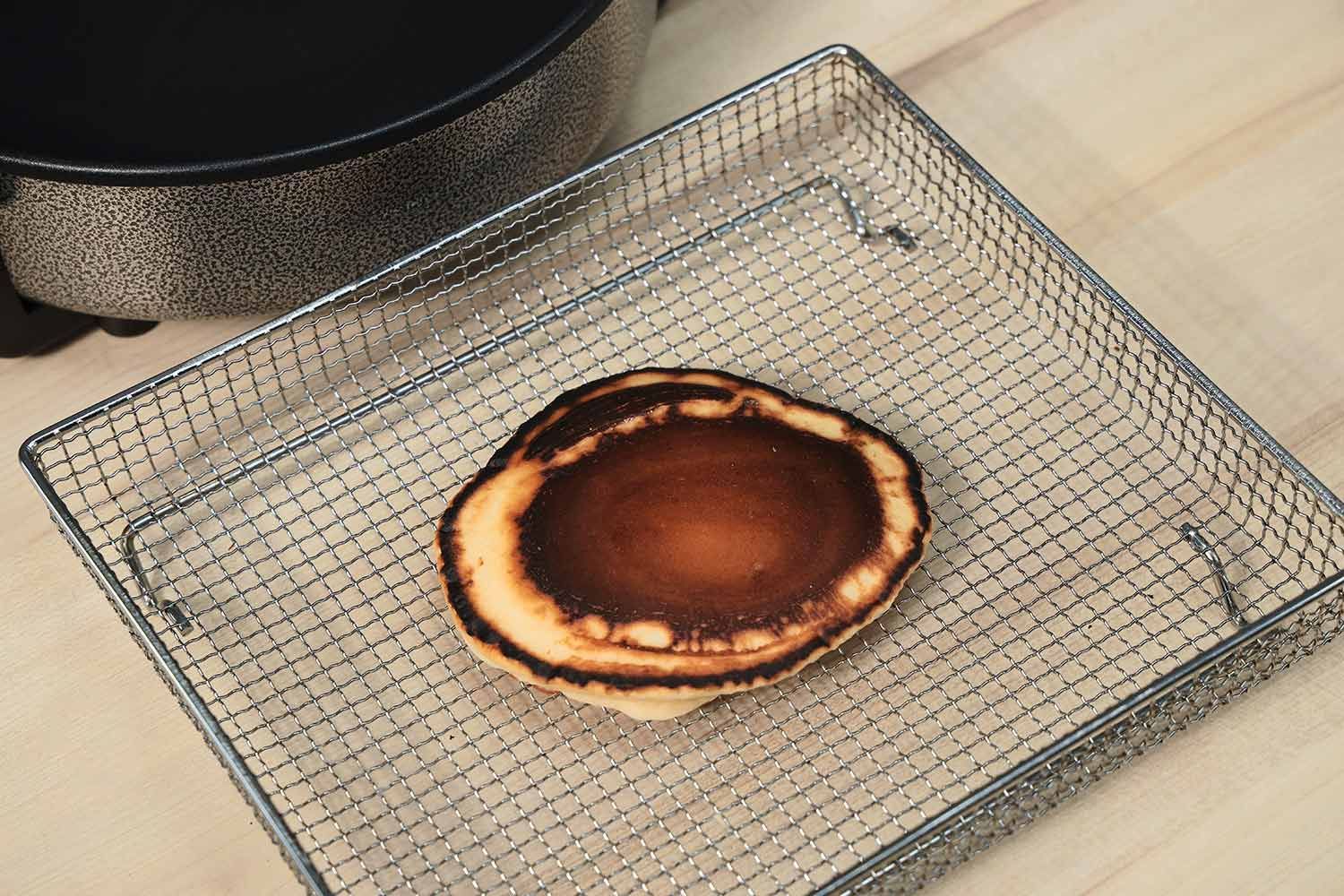
- 3/10: 30% even golden brown color; inedible dark edges;
